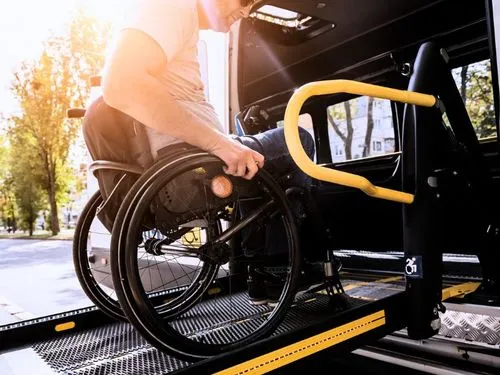

The Alhambra offers dedicated parking spaces for visitors with disabilities in its public car park, which is monitored 24 hours a day. This facility has a capacity of 360 vehicles and includes areas reserved for people with reduced mobility, coaches, and buses. The car park is located at the base of the hill, providing convenient access to the monument. Please note that parking is subject to availability, and it's advisable to arrive early, especially during peak tourist seasons. For more detailed information, including parking fees and directions, you can visit the official website.

Inside the Alhambra, efforts have been made to enhance accessibility for visitors with reduced mobility. Approximately 70% of the monument is accessible, with adapted routes and facilities to accommodate wheelchairs and other mobility aids. However, certain areas, such as the Alcazaba and some parts of the Nasrid Palaces, remain inaccessible due to architectural constraints like stairs and uneven terrain. Visitors can consult the accessibility map available on the official website to plan their visit accordingly.
The Alhambra offers wheelchairs for hire to visitors who need them. The Council maintains several wheelchairs available for rental at the monument.
Visitors should contact the Alhambra in advance to ensure wheelchair availability for their visit date. This service helps those who may not travel with their own mobility equipment.
Visitors with disabilities can purchase tickets through the same channels as other guests. Tickets are available for direct purchase at the monument's ticket office.
They can also buy tickets online through the official Alhambra website. The standard ticketing process applies to all visitors regardless of accessibility needs.
Wheelchair users can explore approximately 50% of the Alhambra complex. The remaining areas are not yet accessible due to architectural limitations.
The Alhambra has established a specific wheelchair-accessible route that covers the main accessible areas. Some locations have alternative access points to accommodate visitors with mobility challenges.
Ramps have been strategically installed throughout the complex. These ramps help wheelchair users navigate between different levels of the monument.
The Alhambra provides wheelchair accessible route maps for visitors. These maps show the designated pathways that accommodate mobility equipment.
Visitors can find the accessibility map displayed at various locations throughout the site. The map clearly indicates which areas are accessible and the recommended route to follow.
The search results do not provide specific information about elevators or lifts within the Alhambra complex. Visitors with mobility impairments should contact the Alhambra directly for detailed information about vertical accessibility features.
The monument primarily relies on ramps and alternative pathways to provide access between levels. These accommodations help visitors navigate the site's varied terrain.
The Alhambra has established a special itinerary designed for visitors with reduced mobility. This route minimizes walking distances while maximizing access to key areas.
Visitors can access the complex through the main entrance or the Gate of Justice. Both entry points provide access to the wheelchair-accessible route.
The wheelchair rental service particularly benefits those who can walk short distances but need assistance for longer stretches. This arrangement allows more visitors to experience the monument comfortably.